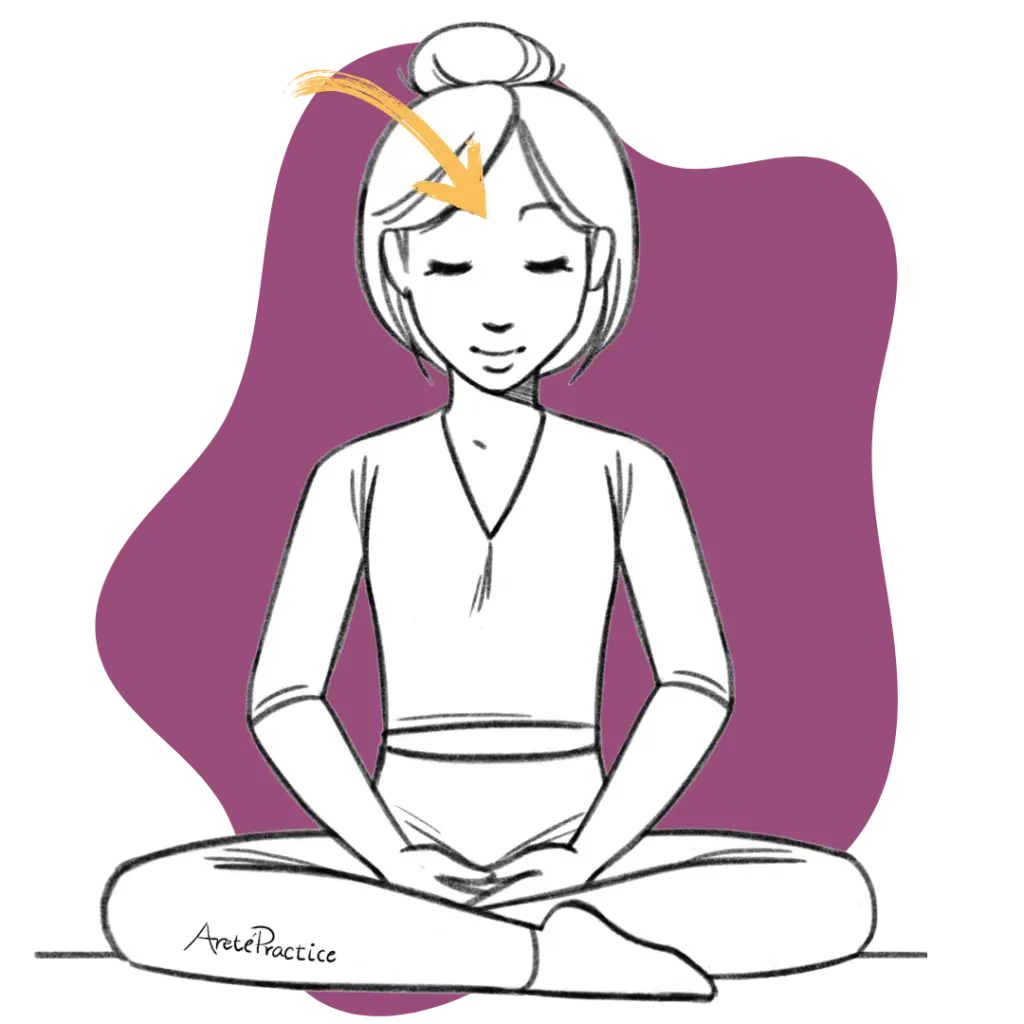Share this article:

"Drishti, or focused gaze, is the practice of fixing our vision on one point to aid concentration and intention."
~ Donna Farhi ~
Yogis discovered through trial and error that focusing the eyes in certain ways had tremendous benefits in their practice and meditation. Drishti, or focused gaze, involves the intentional focusing of the eyes, which channels the flow of energy in the system.
Drishti works by impacting the brain and glandular system through the optic nerve, one of the twelve cranial nerves. By shifting the gaze, such as from the brow point to the tip of the chin, we change the pressure on the glands and gray matter of the brain, initiating subtle biochemical changes.
For example, the pituitary gland, closely related to the eyes and sound, is influenced by the amount of light entering the brain. Through drishti practice, we can control the amount of light the pituitary gland receives, stimulating it in various beneficial ways. Your eyes, after all, are your brain’s windows on the outside of your body. They are the primary connection to all of your brain’s many processes.
Philosophically, drishti use reminds us that we are responsible for our focus, both in our practice and when we are out in the world. It is a way of self-regulating our brain and a reminder that it is our responsibility to decide where we place our attention in life.
This is an exceedingly common eye focus, that is frequently specified in exercises and meditations, but it is also recommended for use in any exercise or meditation (unless another focus is indicated). Closing the eyes shuts down sensory input and allows the practitioner to go deeply within, focusing on their inner experience instead of what is going on outside. This focus counters tendencies to compare and compete with others and abdicate the self; it can provide for very deep meditative experiences.

This drishti, also referred to as the Lotus Point, is considered the highest lock. When the optic nerve concentrates at the Tip of the Nose, energetic channels of ida, pingala and shushumna become centered and balanced. This alignment stimulates the pineal gland and the frontal lobe of the brain to create new mental pathways. The resulting effect is the ability to better control one’s mind. Additionally, this Drishti stimulates the Sixth Chakra (Ajna Chakra) located on the forehead between the eyebrows.
Tip: When you first begin to practice this drishti it may be uncomfortable as this eye movement is not something we typically do every day. Slowly build up resilience by practicing a few seconds, and extend the duration until it is comfortable to practice for prolonged periods of time.

This drishti is ideal for meditation as it stabilizes the optic nerve and helps minimize sensory input, without shutting the sensory system off entirely. It has a calming effect and also helps develop your intuition.
Note: There are variations in how this drishti is described, and it may be used in conjunction with another point of focus. Some meditations ask you to have your eyes 1/10th open looking at another point (as below). If a meditation or exercise asks for the eyes to be 9/10th shut, this is exactly the same as 1/10th open.

This drishti, also known as Shambavi Mudra, is one of the most common dristhi across yogic disciplines. This drishti stimulates the pituitary gland and shushumna (central channel of the spine) to help develop intuition, improve mental stability, and concentration.

This drishti has a cooling and calming effect, allowing you to gain a clearer perspective of yourself and remain steady while experiencing emotions.

Turning your gaze upward helps stimulate the pineal and the crown energy center (7th chakra). This helps create a sense of expansion and helps cultivate Universal consciousness.

Yes it is; you may be working muscles and nerves that you have not engaged before. Be gentle with yourself and increase the time gradually. There is no rush to achieve. Instead, remind yourself that it is the moment by moment process of being mindful and present with yourself that matters, not an external accomplishment or amount of time. You may find that the discomfort comes in waves and/or eases over time.
Those with a history of migraines, headaches, or concussions should practice drishti with caution and consult their doctor, as well as take it extra slow.

Are just starting a personal yoga practice and do not know where to start? Explore this section of our website where it will walk you step by step on how to get started!

Amrit Kaur Ramos is the founder of Areté and a Kundalini Yoga instructor with over 20 years of experience guiding students through the transformative practice of Kundalini Yoga. She is also a dedicated women’s circle leader, with over 10 years of experience creating sacred spaces for women to connect, heal, and empower each other. Amrit Kaur brings a wealth of wisdom and compassion to her teaching, inspiring others to awaken their true potential and live authentically.
Follow us on social media for daily inspiration, free resources, and community updates. Find us on Instagram, Facebook, YouTube, and LinkedIn.
Copyright 2024 © Areté. All Rights Reserved.

Fill out the form below, and we will be in touch shortly.